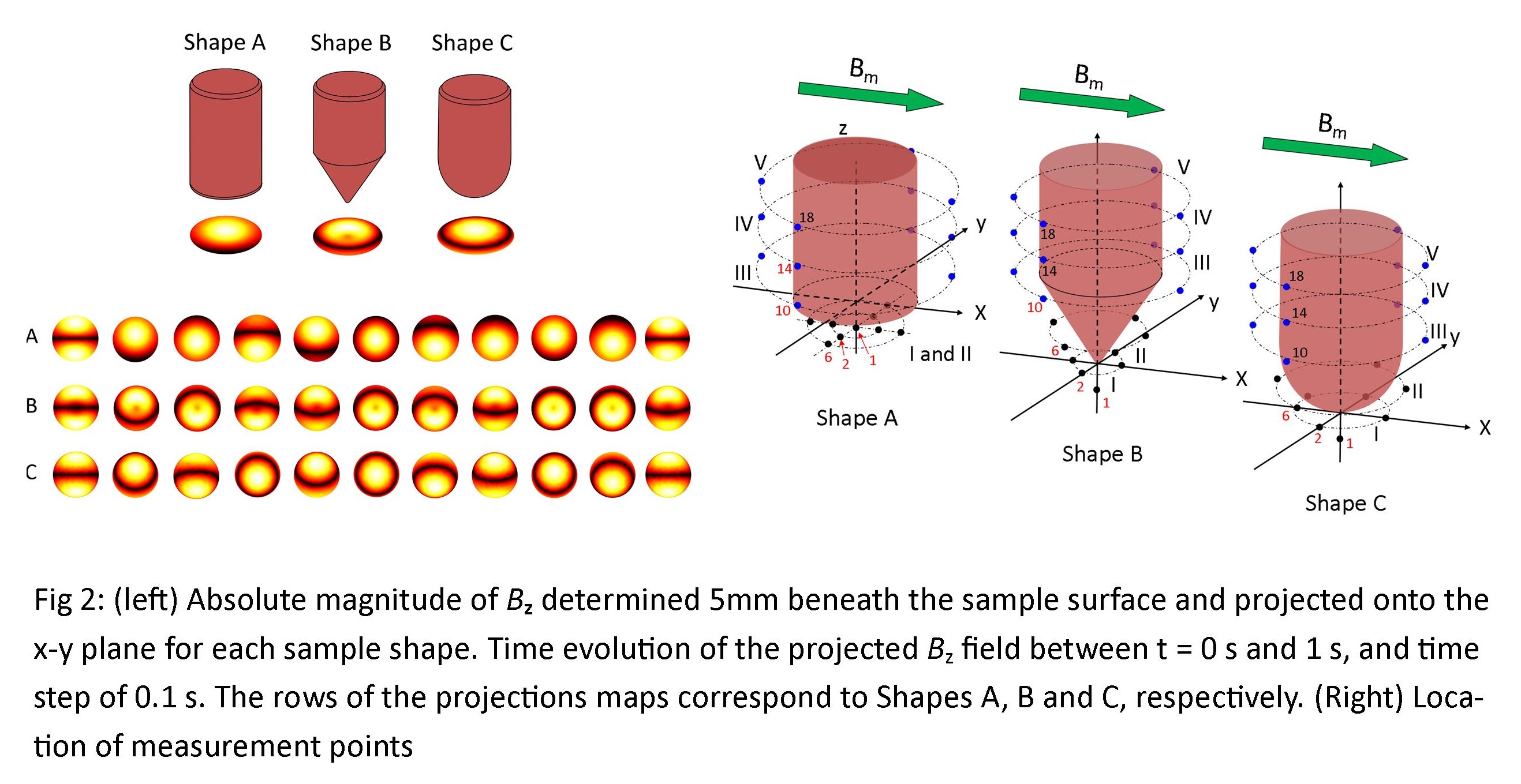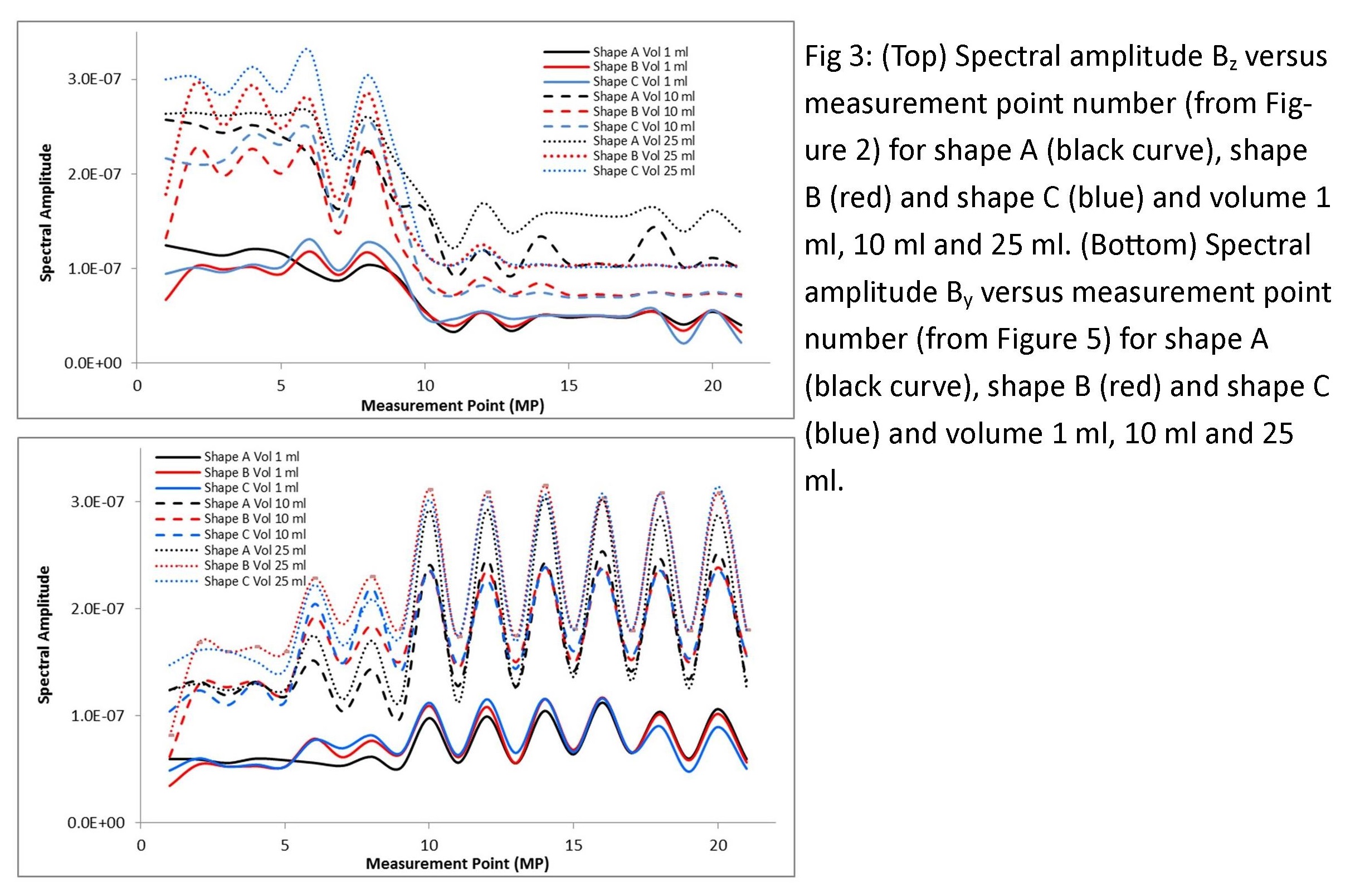orals 5th Asia-Pacific NMR Symposium 2013
Numerical study of signal strength in ultra-low field nuclear magnetic resonance (#42)
The application of ultra-low magnetic fields (ULF) (below earth magnetic field) to nuclear magnetic resonance (NMR) and magnetic resonance imaging (MRI) in medicine, biomedical, material and chemical sciences has been developing rapidly, partially driven by the benefit to design and operate economical NMR/MRI instruments 1 . Among the most promising characteristics of ULF instrumentation is the overlap of the low Larmor frequency with the rates of change of chemical and biological processes such as diffusion, protein folding, and neuronal activity, hence providing new opportunities to study slowly evolving dynamic processes. However, ULF-NMR/MRI instruments are inherently insensitive due to low sample magnetisation. Common approach of boosting sensitivity is to use superconducting magnetometers, which is has shortcomings due to the need for cryogenics.
 We developed the first non-cryogenic ULF-NMR instrument equipped with localized, single-axis magnetometers (Fig. 1). This enables close range measurements of the sample containing localized information with increased sensitivity by knowing optimal sensor location and orientation relative to sample size and shape. To determine optimal sensor placement, we numerically studied the temporal magnetic field evolution during sample demagnetisation across a range of sample sizes and shapes (Fig 2) 2 .
We developed the first non-cryogenic ULF-NMR instrument equipped with localized, single-axis magnetometers (Fig. 1). This enables close range measurements of the sample containing localized information with increased sensitivity by knowing optimal sensor location and orientation relative to sample size and shape. To determine optimal sensor placement, we numerically studied the temporal magnetic field evolution during sample demagnetisation across a range of sample sizes and shapes (Fig 2) 2 .

Figure 3 details how sample shape and size influence the magnetic field distribution and therefore determines optimal location and orientation of the magnetometer 2 . We demonstrated that an optimal sample shape and size exist in terms of maximal signal strength for different sensor orientations. For the various sensor locations tested the variation in signal strength can be as large as 90 %, highlighting the importance of numerical studies in the design of ULF-NMR systems.

- 1. Espy, M., A. Matlashov, and P. Volegov, SQUID-detected ultra-low field MRI. Journal of Magnetic Resonance, 2013. 228(0): p. 1-15.
- 2. Vogel, M.W., V. Vegh, and D.C. Reutens, Numerical study of ultra-low field nuclear magnetic resonance relaxometry utilizing a single axis magnetometer for signal detection. Medical Physics, 2013. 40: p. 052301.